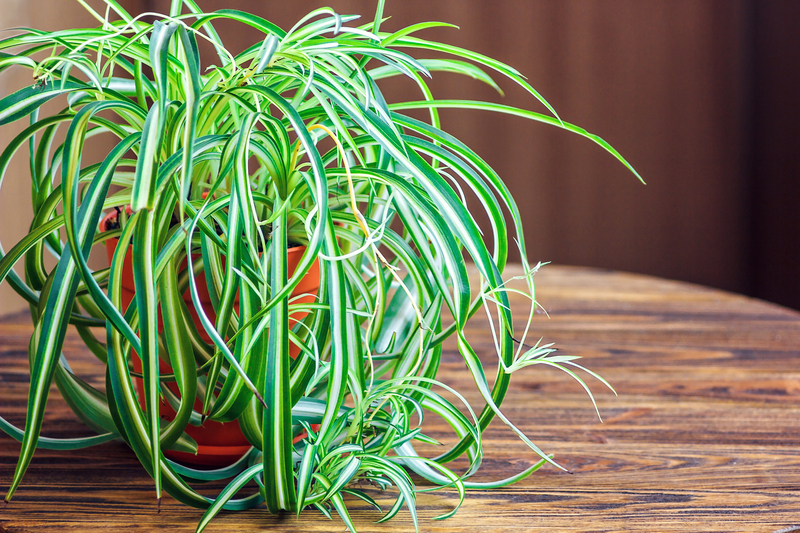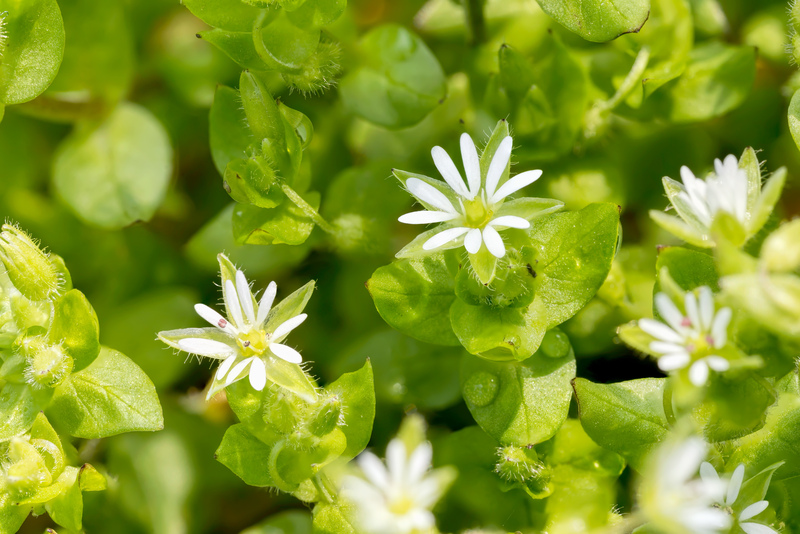Grow a Beautiful Garden with Dog Companionship
Posted on 07/09/2025
Grow a Beautiful Garden with Dog Companionship
Are you dreaming of a lush, vibrant garden while also cherishing time with your furry best friend? Dog companionship and gardening can go hand in hand, creating a serene, productive space for both you and your canine. In this comprehensive guide, you'll discover practical tips, expert insights, and inspiring ideas to cultivate a beautiful garden with dogs at your side.
Why Combine Dog Companionship With Gardening?
Gardening is a therapeutic and rewarding activity; so is spending time with your dog. But when merged, gardening and dog companionship offer remarkable benefits:
- Physical Activity: Both you and your pet stay active.
- Mental Health: Nurturing plants while bonding with your pup boosts mood and reduces stress.
- Outdoor Enrichment: Dogs enjoy mental stimulation and sensory exploration in green spaces.
- Fosters Responsibility: Caring for a garden and a dog enhances your routine and sense of achievement.
By the end of this article, you'll know how to build a dog-friendly garden that thrives while accommodating your loyal companion.

The Challenges of Gardening with Dogs
Before embarking on your gardening journey with your dog, it's essential to acknowledge some common challenges:
- Paw Traffic: Dogs may trample delicate plants during energetic play.
- Digging: Many dogs love to dig, which might damage roots or bulbs.
- Plant Chewing: Curious canines might nibble on leaves, which can be harmful if the plants are toxic.
- Soil Disruption: Dogs' activities can compact soil, affecting plant health.
But with thoughtful garden design and training, these hurdles are manageable. Let's dive into the best ways to grow a garden with your dog--with stunning results!
Designing Your Dog-Friendly Garden
1. Plan Paths and Play Areas
Dogs are creatures of habit and tend to create their own paths in the yard. To protect your plants:
- Identify existing dog routes: Observe where your dog likes to run and set up durable paths in those areas.
- Use materials like mulch, gravel, or stone for pet-friendly walkways.
- Designate a dog play area--consider a space for digging, fetching, and supervised zoomies.
2. Choose Non-Toxic, Dog-Safe Plants
Many common garden plants are toxic to dogs, so select options that are safe for dog gardens. Ideal choices include:
- Sunflowers
- Marigolds
- Snapdragons
- Rosemary
- Thyme
- Bamboo (non-invasive varieties)
*Avoid planting azaleas, daffodils, foxglove, and sago palm--these can be highly poisonous*
3. Protect Delicate Plants and Garden Beds
Use fencing and raised beds to keep paws off fragile blooms:
- Install low, decorative fences around sensitive areas.
- Try raised garden beds to elevate edibles and flowers above your dog's reach.
- Strategically place large rocks or garden decorations as barriers along borders.
4. Mulch Matters
Choose mulch carefully--cocoa mulch is toxic! Instead, opt for:
- Cedar mulch
- Pine straw
- Medium or coarse wood chips
These options keep moisture in the soil, reduce weeds, and are less tempting for doggy snacking.
Best Dog-Friendly Garden Plants
Edible and Aromatic Herbs
- Mint - Resilient and safe; dogs often ignore it.
- Basil - Another non-toxic culinary favorite.
- Parsley - Safe in moderation and nutritious.
- Lemon balm - Mild scent and safe for pups.
Hardy Shrubs and Groundcovers
- Creeping thyme - Tolerates foot traffic, pretty blooms.
- Heather - Colorful, non-toxic shrub.
- Cotoneaster - Attractive berries and ground cover.
Dog-Safe Flowers
- Calendula (Pot Marigold)
- Coral Bells (Heuchera)
- Fuchsias
Double-check all plant choices with a veterinarian or local extension office if you're unsure. Remember: even dog-safe plants can cause upset tummies if large amounts are eaten.
Encouraging Positive Behavior in the Garden
Training and Supervision
A beautiful, dog-friendly garden depends on teaching your pup what's allowed. Try these tips:
- Start with positive reinforcement--reward your dog for using the right paths and avoiding "off-limits" beds.
- Practice basic commands: "Leave it", "Stay", and "Come".
- Supervise playtime, especially as your garden grows in spring.
If you notice problem behaviors--like digging--redirect your dog to their designated play area and shower them with praise.
Dealing with Digging
Some breeds are natural diggers. Instead of constant scolding, provide alternatives:
- Install a doggy dig pit: a sandbox or loose-soil patch where digging is encouraged.
- Bury toys or treats to make the designated area exciting.
- Use garden decor or stones to hide spots where digging is unwelcome.
Discouraging Chewing and Plant Damage
Gently correct dogs who chew on plants:
- Verbally redirect or use a leash when needed.
- Offer safe chew toys in the garden.
- Spritz bitter apple spray on trouble zones (test plants first for sensitivity).
Natural Pest and Weed Control with Dogs
Many gardeners turn to chemicals to control weeds and bugs, but with dogs around, safety becomes critical. Try these pet-friendly alternatives:
- Hand-pulling weeds - Most effective, zero risk!
- Mulch and ground covers - Suppress weeds naturally.
- Neem oil - Generally safe for pets once dried.
- Diatomaceous earth - Non-toxic pest control, but use food-grade and avoid letting dogs inhale dust.
- Beneficial insects - Ladybugs and nematodes naturally deter pests.
Never use products containing slugs' baits, herbicides, or chemical insecticides unless they are specifically labeled as pet-safe.
Creating a Relaxing Garden Retreat for Dogs and Owners
Your garden with dog companionship should be beautiful and functional--a sanctuary for everyone. Consider the following features:
- Shady resting spots: Use shade trees, pergolas, or dog houses for summer comfort.
- Fresh water station: Keep a clean water bowl or even a dog-friendly water fountain!
- Outdoor toys: Durable ropes, balls, and sprinklers for fun.
- Soft lawn areas: Zoysia, fescue, or buffalo grass tolerate light paw traffic and provide comfy napping spots.
- Safe fencing or borders: Ensure the garden perimeter is secure to prevent escapes.
Year-Round Maintenance Tips for Dog Owners
Cultivating a gorgeous garden with your canine companion means regular upkeep. Here's what you need to remember each season:
Spring
- Check for winter-damaged fencing or holes along borders.
- Supervise young plants as they establish roots--use temporary protection if needed.
- Start regular flea and tick control using pet-safe methods.
Summer
- Ensure water is always available.
- Give your pup plenty of shade breaks on hot days.
- Watch for overheating or sunburn on thinly-furred breeds.
Autumn
- Clear fallen leaves, especially from dog play areas.
- Harvest herbs and veggies before the first frost--some, like pumpkin, are dog-friendly treats.
- Winterize water features and garden furniture.
Winter
- Remove ice or snow from garden paths often.
- Use pet-safe deicer on walkways.
- Provide cozy bedding or a heated dog house for garden naps.
Dog Companionship: Cultivating Joy In and Beyond the Garden
Beyond practicality, gardening with your dog creates lasting memories and mutual enrichment. As you work together, you'll notice:
- Stronger bonds: Quality time outdoors does wonders for your relationship.
- Shared routines: Dogs thrive on routine, and garden chores can be part of your day.
- More mindful living: Slowing down to savor the beauty of blooming flowers and wagging tails.
If you've ever wanted to grow a beautiful garden with your dog, there's no better time to start!

Frequently Asked Questions (FAQ)
Q: What are the best ways to keep my garden safe from dog urine damage?
A: Dog urine can cause brown spots on lawns. To prevent this:
- Encourage your dog to use a designated potty area, mulched or graveled as needed.
- Water the spot immediately after your dog pees to dilute the effects.
- Choose hardy grass varieties like rye, fescue, or Kentucky bluegrass.
Q: How can I prevent my dog from jumping into raised beds?
A: Try using higher or wider raised beds, install decorative fencing, and train your dog to stay "off" using positive reinforcement.
Q: Is compost safe for dogs?
A: No, most compost (especially food waste) can be harmful if ingested. Fence compost bins securely and keep them off-limits.
Conclusion: Gardening With Your Dog -- A Winning Combination
Combining your love of plants and pets means more time outside, healthier habits, and double the joy. With some planning and understanding, you can absolutely grow a beautiful, dog-friendly garden--one where every member of your family, furry or not, can thrive.
Ready to start your journey? Gather your tools, leash up your pup, and transform your yard into a breathtaking haven. Here's to lush blossoms, wagging tails, and a garden that grows not just plants, but also the bond between you and your best friend!
```
